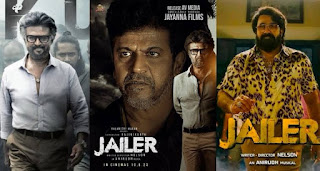‘What is your substance, whereof are you made?’ This could be addressed to a human. Or a transhuman. Or a post- human. Or an avatar. Or a ghost.
Night Side Of The River is a collection of ghost stories written by Jeanette Winterson. It is to be made clear from the onset that these are not horror stories in the conventional sense, though there are some scares and violence that the reader encounters along the way. The writer tries to explore the fine line that divides the state of being alive and dead. I received an advance copy of this book from the publisher, Grove Atlantic, through Netgalley in exchange for feedback.
The collection has thirteen short stories and three autobiographical notes that describe the writer's relationship with paranormal entities in real life. The stories are collected in four parts. The first part, titled Devices, has three stories that deal with ghosts using technological advances in AI and the metaverse to make their presence felt to humans. The second part, titled Places, consists of ghostly experiences happening at buildings that have violent pasts. The third and fourth parts, People and Visitations, contain stories about ghostly apparitions of people from the past making visits.
App-arition, the opening story, starts with a grieving widow installing an app that can message and even make calls like her late husband. All hell breaks loose when a sinister truth from their past is laid bare, upsetting the reader's expectations. The Old House At Home is one of the spookiest tales of the collection, in which a seance is performed using virtual reality. Ghost In The Machine happens inside a metaverse, where the lines between living, dead, and AI constructs become blurred.
The grief-stricken protagonist of the story The Spare Room has to tolerate an equally sad ghost in her spare room. Two stories, A Fur Coat and The Boots, are complementary; one story completes the other. Each one describes the same event from the point of view of a different character. Another pair of stories that follow a similar format in the collection are No Ghost Ghost Story and The Undiscovered Country. The Door is a ghost story that subverts the reader's expectations in which a couple experiences wierd sightings in the castle in which they have planned their wedding celebration.
A person killed decades before comes back for revenge in the eerily funny Centerville And Cock. In Thin Air is my favourite story in the collection, in which the protagonist finds herself getting cosy with a visitor from the past in a ski resort. Fountain With Lions is a heartwarming story of a visitation from a ghost with a great twist towards the end, while the title story, Night Side Of The River is a bizarre tale that fills the reader with dread.
Most of the stories in this collection have a philosophical angle to them. In most of them, the protagonists are grieving or are in their personal lows when they experience the paranormal. We are left wondering if it is their grief that makes them conducive to the visits or if, due to grief, they are imagining things. Are they hallucinating, or is it really a glitch in the matrix?
The writer explores the state of death, that of existing without a form in a world that is sufficiently detached from the real world, and questions if the dead can really make an appearance if they have sufficient longing for a return. Her observation is that the advent of metaverses creates a level playing field for ghosts to interact because when humans enter the metaverse, they shed their physical forms and become like ghosts—formless and without occupying physical space. Night Side Of The River is a collection of ghost stories that provides food for thought for the readers as well as terrify them with otherworldly tales of hauntings.
Maybe consciousness exists, just as the light spectrum exists. Think of consciousness as part of the reality- spectrum, not unique or separate. I appear to be still conscious, though what it is I am conscious of is changing.


%20(14).jpeg)
%20(13).jpeg)
%20(12).jpeg)
%20(7).jpeg)
